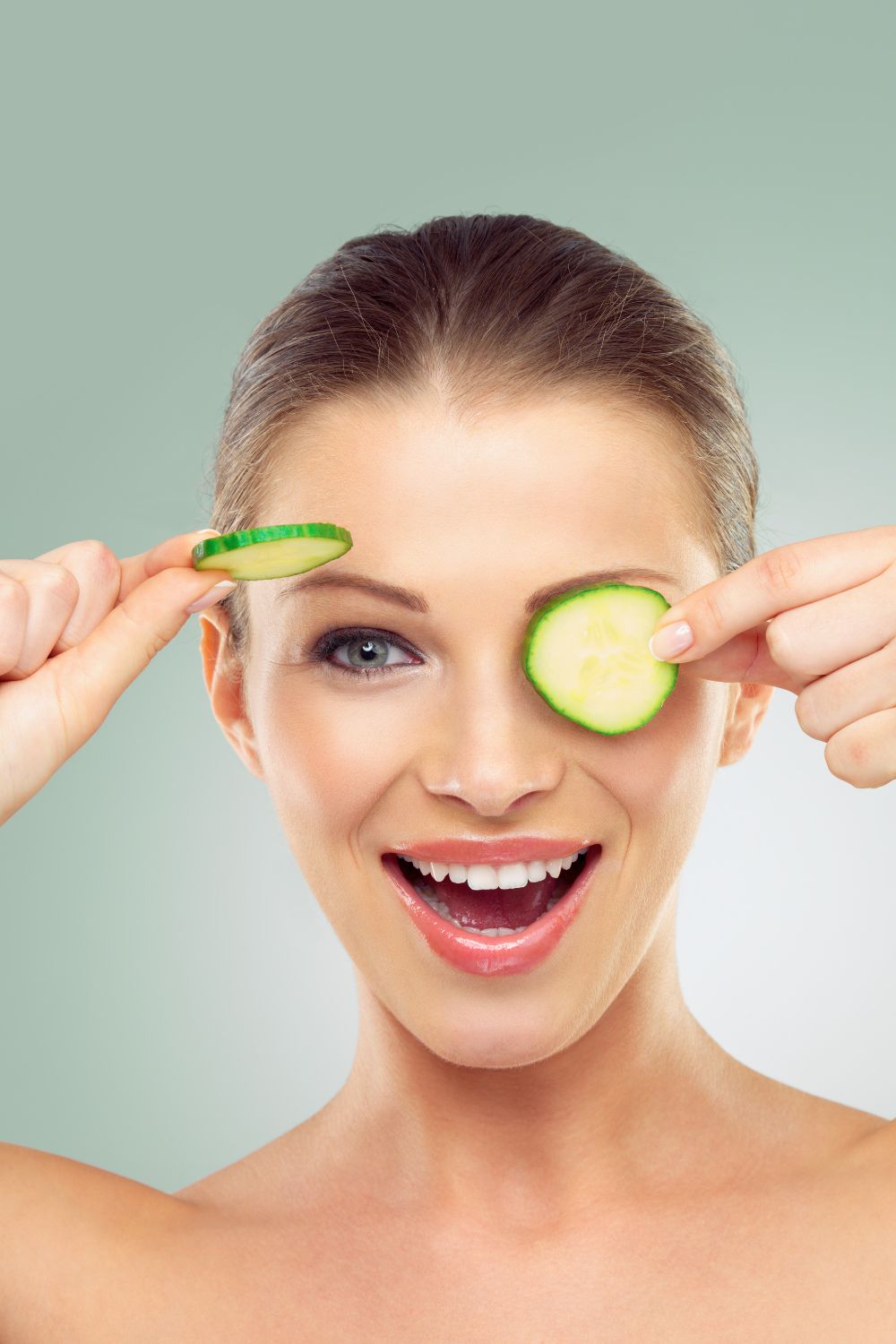
Understanding the Causes of Dark Circles
So, you’ve noticed those shadowy areas under your eyes and are wondering what’s up? It’s a common thing, and honestly, there are a bunch of reasons why they show up. It’s not always just about not getting enough sleep, though that’s a big one for many of us. Sometimes, it’s just how we’re built, or maybe our lifestyle is catching up with us. Let’s break down some of the main culprits.
Genetics and Heredity
Yep, you can sometimes blame your parents for those dark circles. If your mom or dad had them, there’s a good chance you might too. This is often due to how your skin is naturally structured or how much pigment (melanin) your skin produces. Some people just naturally have thinner skin under their eyes, which makes the blood vessels underneath more visible, giving that darker appearance. It’s just part of your unique makeup, and understanding this is the first step.
Lifestyle Factors: Sleep, Diet, and Stress
This is where we have a bit more control. Not getting enough sleep is a classic cause. When you’re tired, your skin can look paler, making the dark blood vessels under your eyes stand out more. Plus, lack of sleep can make you look generally more stressed and worn out. What you eat matters too. A diet lacking in certain nutrients or too much salt can lead to fluid retention, making puffiness and shadows worse. And stress? It definitely takes a toll. When you’re stressed, your body releases cortisol, which can affect your skin and circulation. Trying to manage stress and get decent sleep can make a real difference.
Aging and Skin Thinning
As we get older, our skin naturally changes. The skin under our eyes is already pretty delicate, and over time, it tends to get even thinner. This thinning means the blood vessels beneath are more apparent. Also, we lose some of the fat and collagen that keeps our skin plump and firm. This loss can make the area under your eyes look hollowed, creating shadows that look like dark circles. It’s a natural part of aging, but there are ways to help support your skin through these changes.
Allergies and Nasal Congestion
Ever notice your dark circles get worse when your allergies are acting up? That’s not a coincidence. Allergies can cause inflammation and make the blood vessels around your eyes dilate, which can lead to a darker appearance. When your nose is congested, it can also affect blood flow in the area around your eyes. This congestion can cause the veins that drain from your eyes to become darker and more visible. So, if you’re dealing with seasonal sniffles, that might be contributing to your under-eye situation. managing allergies can sometimes help clear things up.
Effective Home Remedies for Dark Circles
Sometimes, you don’t need fancy creams to tackle those pesky dark circles. Simple things you can do right at home can make a real difference. It’s all about being consistent and finding what works for your skin.
Cold Compress and Cucumber Slices
This is a classic for a reason. The cold helps constrict blood vessels, which can reduce puffiness and the appearance of darkness. Cucumbers also have a mild lightening effect and are full of water, which is hydrating.
Here’s how to do it:
- Chill Out: Grab a clean washcloth, soak it in cold water, wring it out, and place it over your closed eyes for about 10-15 minutes. You can also use a bag of frozen peas wrapped in a soft cloth.
- Cucumber Power: Slice up a chilled cucumber – not too thin, not too thick. Lie down, close your eyes, and place a slice over each eye for about 10 minutes. It feels really refreshing.
Tea Bags (Caffeinated and Herbal)
Don’t toss those used tea bags just yet! Both caffeinated and certain herbal teas can be beneficial. The caffeine in black or green tea can help constrict blood vessels, while the antioxidants in many teas can help soothe and repair skin.
- Caffeinated Boost: Steep two green or black tea bags in hot water for a few minutes. Let them cool down completely in the refrigerator. Once chilled, place one bag over each closed eye for about 10-15 minutes. This is a great way to wake up tired eyes.
- Herbal Soothe: Chamomile or calendula tea bags can also be used. They have anti-inflammatory properties that might help calm the under-eye area.
Almond Oil and Vitamin E
These natural oils are packed with nutrients that can help nourish and brighten the delicate skin around your eyes. Almond oil is rich in Vitamin E, and Vitamin E itself is a powerful antioxidant.
- Gentle Massage: Before bed, take a tiny drop of pure almond oil and gently pat it around your orbital bone using your ring finger. Don’t rub; just a light patting motion is best.
- Vitamin E Power: You can also use a Vitamin E capsule. Carefully prick the capsule and dab a small amount of the oil onto your under-eye area.
Remember, consistency is key with home remedies. You might not see dramatic results overnight, but with regular use, you should notice an improvement in the brightness and texture of your under-eye skin.
Skincare Products and Ingredients to Look For
When you’re trying to tackle dark circles, the right skincare can make a real difference. It’s not just about slapping on any old cream; you want to choose products with ingredients that actually work to brighten, firm, and hydrate the delicate skin around your eyes. Think of it as giving your under-eyes a targeted boost.
Retinol, Vitamin C, and Hyaluronic Acid
These three ingredients are often called the power players for under-eye concerns, and for good reason. They each tackle dark circles from a different angle, making them a great team.
- Retinol: This is a form of Vitamin A that’s a superstar for skin renewal. It helps to speed up cell turnover, which can fade discoloration and thicken the skin over time, making those blood vessels less visible. It also helps smooth out fine lines, which can sometimes make dark circles look worse. You’ll often find it in formulas designed for nighttime use because it can make your skin a bit more sensitive to the sun.
- Vitamin C: This antioxidant is fantastic for brightening the skin. It can help to even out skin tone and reduce hyperpigmentation, which is a common cause of dark circles. Plus, it helps protect your skin from environmental damage, which can contribute to premature aging and those pesky shadows.
- Hyaluronic Acid: This ingredient is all about hydration. It draws moisture into the skin, plumping it up. When the skin around your eyes is well-hydrated and plump, it looks smoother and can make dark circles appear less pronounced. It’s like giving your skin a big drink of water.
Using products with these ingredients consistently can lead to noticeable improvements. For example, a product like L’Oreal’s Revitalift eye cream is often recommended because it contains a blend of retinol, vitamin C, and hyaluronic acid, aiming to reduce puffiness and brighten the under-eye area. It’s worth looking for these key components when you’re shopping for an effective eye treatment.
Choosing the right ingredients is key to seeing real results. Don’t be afraid to check the ingredient list and look for these beneficial components. Your under-eyes will thank you for it!
When you’re starting out with these ingredients, especially retinol, it’s a good idea to introduce them slowly. Start by using them a few times a week and gradually increase the frequency as your skin gets used to them. This helps avoid any irritation. You might also want to consider a product that combines these ingredients for a multi-pronged approach to fighting dark circles.
When to See a Doctor or Dermatologist
While home remedies and over-the-counter products can help with dark circles, sometimes you need a little more professional attention. If your dark circles are suddenly getting worse, or if they’re accompanied by other symptoms like swelling, redness, or pain, it’s a good idea to get them checked out. Persistent dark circles that don’t improve with consistent home care might also warrant a visit to a professional.
Persistent or Worsening Dark Circles
If you’ve tried various methods and your dark circles aren’t budging, or if they seem to be getting darker or more noticeable over time, a dermatologist can help figure out why. Sometimes, what looks like dark circles could be something else, like hyperpigmentation that needs specific treatment, or even a sign of an underlying health issue.
Sudden Changes or Accompanying Symptoms
Don’t ignore sudden changes in the appearance of your under-eye area. If your dark circles appear overnight, or if they come with swelling, itching, or irritation, it could be an allergic reaction or another medical condition. A doctor can diagnose the cause and recommend the right treatment. It’s always better to be safe than sorry when it comes to your health.
Underlying Medical Conditions
Sometimes, dark circles can be a symptom of something more serious going on internally. Things like anemia (low iron), thyroid problems, or even kidney issues can sometimes show up as changes around the eyes. A doctor can perform tests to rule out these possibilities and ensure you’re getting the care you need for any health concerns.
So, What’s the Verdict?
Look, getting rid of dark circles isn’t always a quick fix, but it’s definitely doable. We’ve talked about how things like sleep, hydration, and even genetics play a part. But the good news is, with the right approach – maybe trying out some of these creams like the Bye Bye Dark Circles duo, or even just being more consistent with your skincare routine – you can make a real difference. Remember, it takes time and patience, but seeing brighter, more rested-looking eyes is totally worth the effort. Don’t get discouraged if you don’t see results overnight; keep at it, and you’ll likely be happy with what you find.

